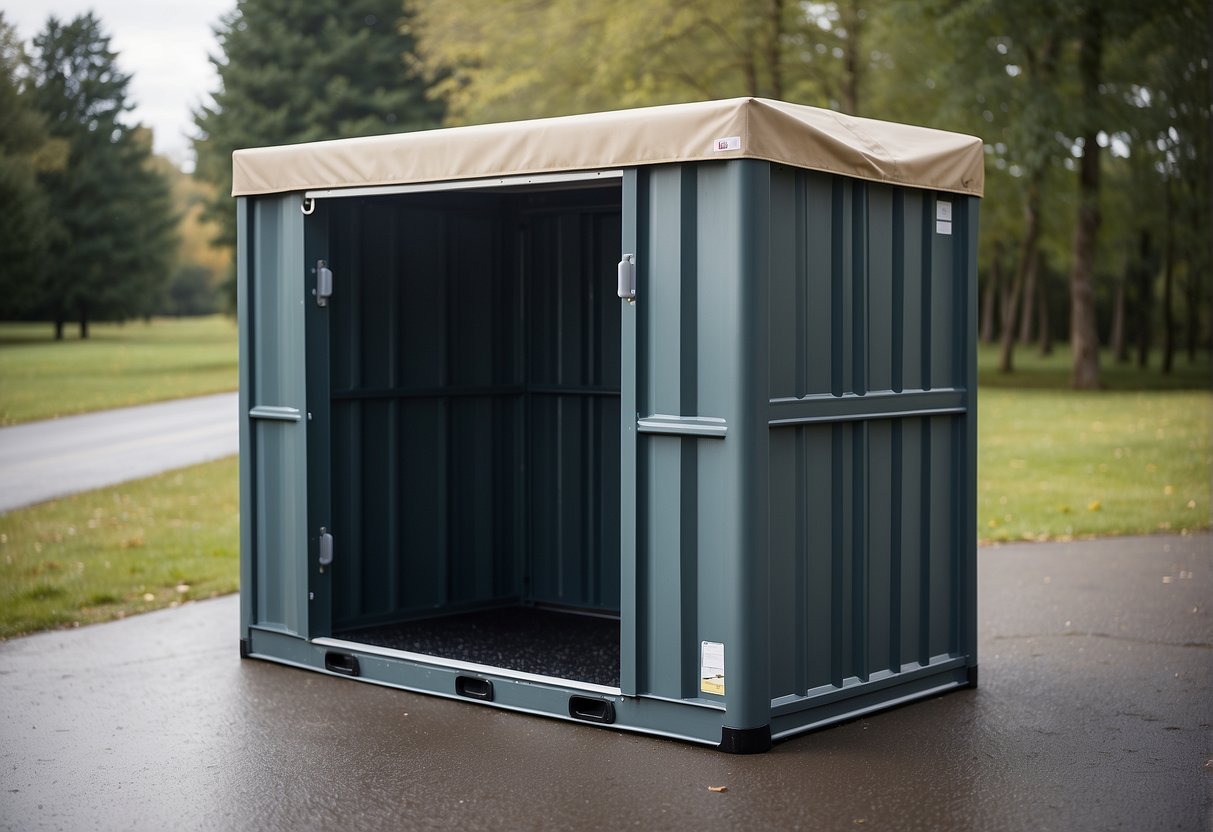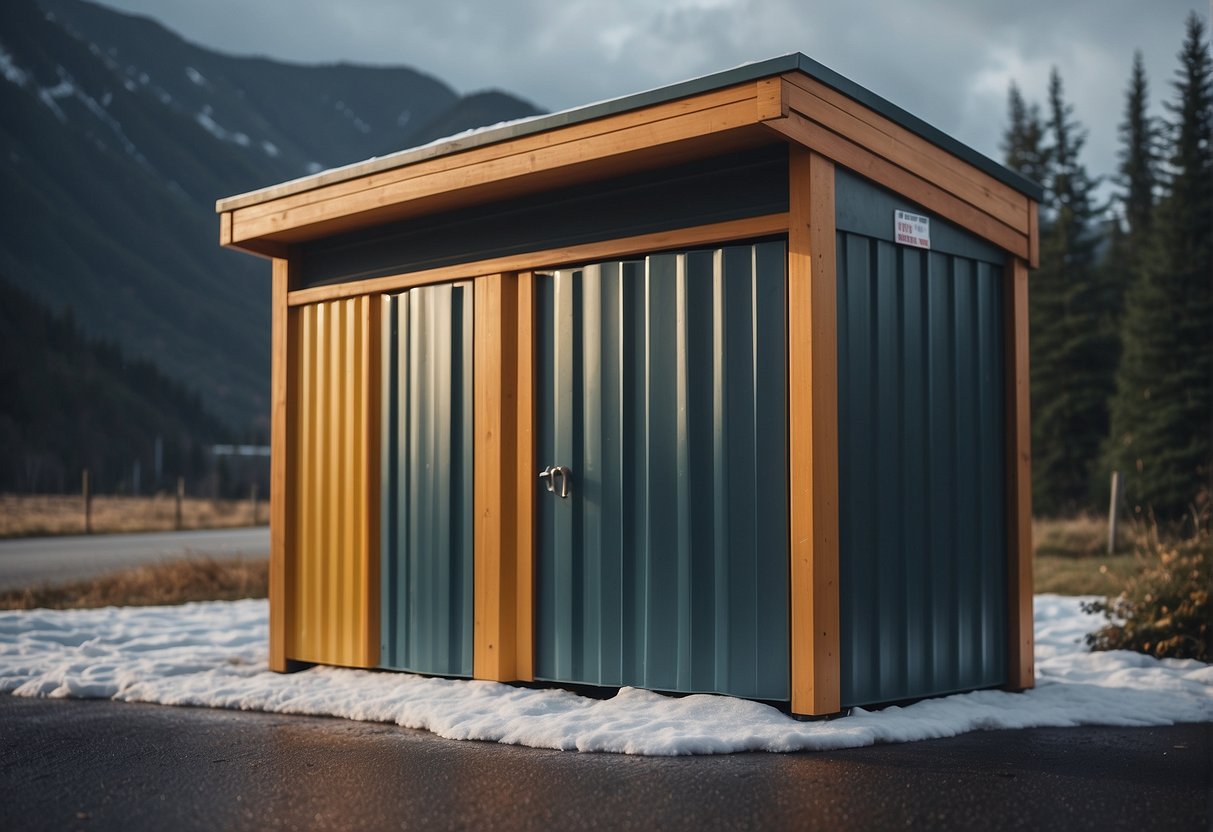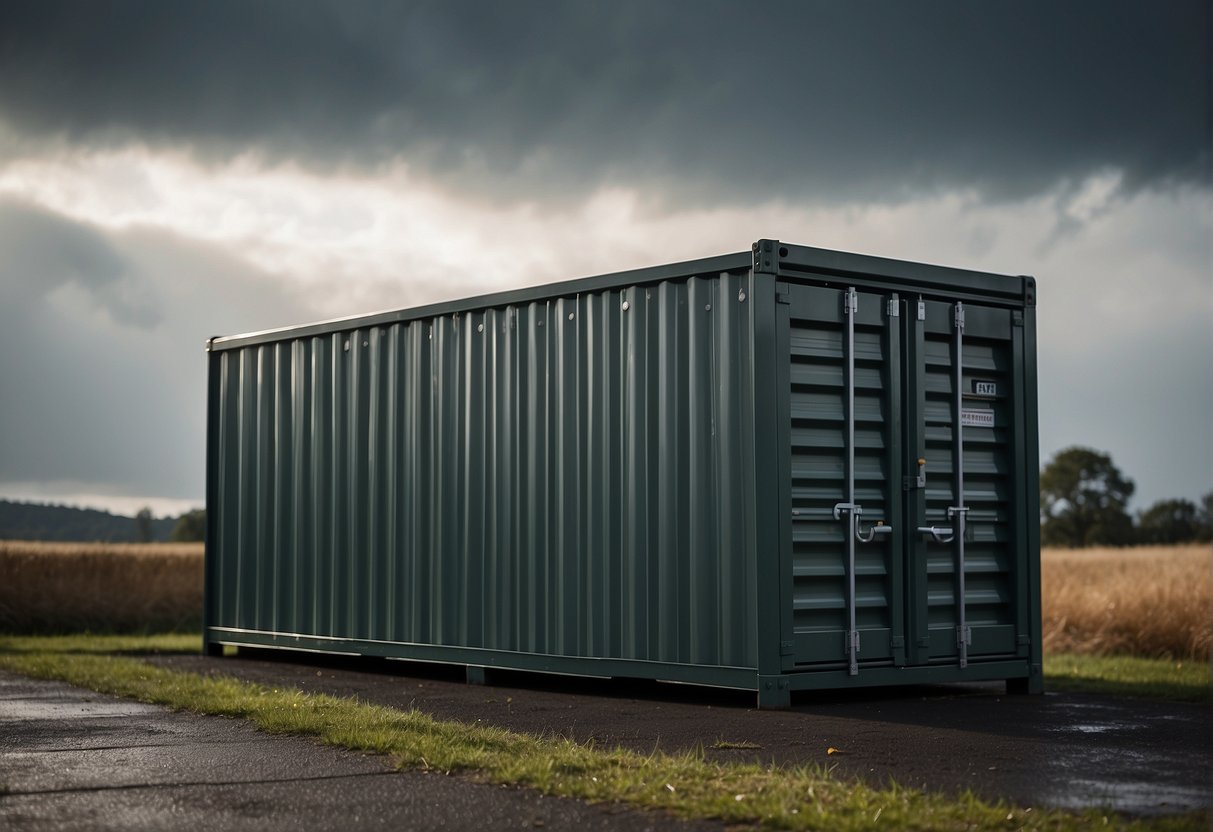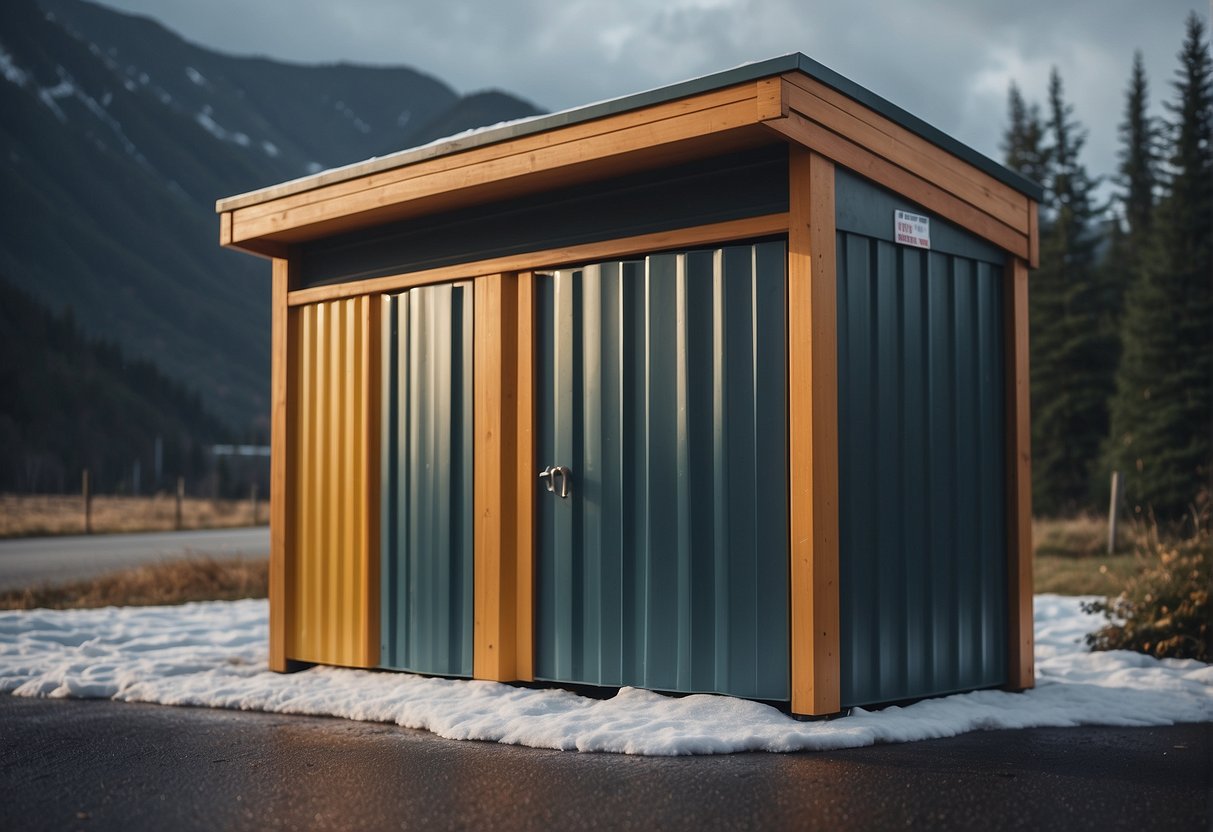Outdoor storage solutions are a practical addition to any exterior space, but they’re also prone to the whims of Mother Nature. Weatherproofing is crucial for ensuring long-term durability and protection of your belongings. Harsh weather conditions can erode or damage materials, leading to costly repairs or replacements. Selecting the right materials and construction for your outdoor storage plays a vital role in its resilience to weather. Rust-resistant metals, waterproof plastics, or treated wood are all considerations that could increase the lifespan of your outdoor storage units.

Weatherproofing strategies go beyond material choice; they encompass a range of practices designed to safeguard your outdoor storage. Your local climate’s specific challenges should be considered—heavy rainfall, intense sun exposure, snowfall, or high humidity. Implementing seals, tarps, or even a sheltered location can further protect your items. Conversely, routine maintenance and cleaning are also integral to preserving your storage condition, including regular inspections and immediate repairs of any damage that occurs. This proactive approach helps to avoid larger issues down the line and ensures that your investment remains secure.
Key Takeaways
- Choosing durable materials is essential for weatherproofing.
- Protective strategies are tailored to local weather conditions.
- Regular maintenance is key to preserving outdoor storage integrity.
Materials and Construction

When weatherproofing outdoor storage, selecting suitable materials and precise construction methods are crucial for ensuring durability and resistance to various weather conditions.
Choosing the Right Materials for Weather Resistance
Materials are the foundation of weatherproofing. Wood options like teak and cedar are natural choices due to their inherent oils that resist rot and repel insects. Hardwoods are preferable for their durability in fluctuating temperatures. However, they require regular treatment to maintain their weather-resistant properties.
Metal storage solutions, particularly those made from aluminum or stainless steel, are valued for strength and rust resistance. A protective powder coating is often applied to metal surfaces to prevent corrosion.
Plastic and resin storage are lightweight, cost-effective options. They offer excellent moisture resistance and are impervious to rust and decay. Synthetic materials like resin wicker can mimic the look of natural wicker while providing superior weather resistance.
Choose water-resistant and UV-protected outdoor fabrics to prevent fading and mildew growth.
| Material | Properties | Maintenance Required |
|---|---|---|
| Wood | Rot-resistant, insect-repelling | Regular sealing/staining |
| Metal | Strong, rust-resistant with coating | Minimal, check for scratches |
| Plastic | Moisture-resistant, decay-proof | Occasional washing |
| Fabric | UV-protected, water-resistant | Varies depending on type |
Construction Techniques for Enhanced Longevity for Outdoor Sheds
Robust construction is as vital as the material itself. Use galvanized or stainless steel fasteners to prevent rusting that can compromise structural integrity.
Joints should be tightly secured and if possible, reinforced to withstand heavy loads and persistent use. Opt for dovetail joints in wooden constructions for enhanced strength.
Elevating storage units off the ground on concrete or paved surfaces will minimize moisture absorption from the ground, especially for wood and metal units.
Roof design also matters; slanted roofs facilitate water runoff, reducing the risk of leaks and water damage. In areas with heavy snowfall, roofs should be built to support the weight of the snow load.
Weatherproofing Strategies

Implementing effective weatherproofing strategies is essential for preserving your outdoor storage against a myriad of weather conditions. Choosing the right materials and techniques can protect against moisture, decay, and damage from UV rays.
Sealants and Coatings for Protection
Applying sealants and protective coatings is critical to safeguard wood and metal storage units from moisture and decay.
- Wood Surfaces:
- Sealant: A waterproof sealant should be applied to block moisture.
- Varnish: Use a varnish for a finish that provides UV protection.
- Paint: Paint with additives to resist mold and provide additional UV protection.
- Metal Surfaces:
- Rust-Preventive Paint: A layer of rust-preventive paint can ward off corrosion.
- Wax: A wax coating should be applied periodically for extra waterproofing and rust prevention.
Covers and Enclosures to Shield from Elements
Utilizing covers and enclosures is an effective measure to protect outdoor storage from various elements.
- Materials:
- Breathable Fabric: Choose covers made from breathable fabric to avoid moisture build-up.
- UV-Resistant Materials: Opt for materials specifically designed to block harmful UV rays.
- Installation:
- Secure Fit: Covers should fit snugly to prevent wind from blowing them away.
- Complete Enclosure: Full enclosures provide better protection compared to partial covers.
Maintaining Outdoor Storage Through Seasons
Regular maintenance is crucial to ensure the longevity of outdoor storage.
- Inspection:
- Periodically check for signs of wear, such as peeling paint or rust spots, and address them promptly.
- Cleaning:
- Keep the storage clean from debris and mildew to prevent material decay.
- Ensure roofing is intact and free of leaks to maintain a dry interior.
Routine Maintenance and Cleaning
Proactive routine maintenance and thorough cleaning are critical to ensuring that outdoor storage solutions endure through various weather conditions.
Regular Maintenance to Prevent Wear and Tear
Regular maintenance is pivotal in averting deterioration of outdoor storage units. Inspect storage containers and sheds quarterly for signs of wear, such as cracks or loose parts. Address these issues promptly to prevent further damage. For metal components, watch for rust. If present, sand the area and apply a rust-resistant coating.
- Check Insulation: Ensure that insulation is intact to guard against extreme temperatures.
- Lubricate Hinges: Keep moving parts, like hinges, well-lubricated to prevent seizing.
Effective Cleaning Methods for Stored Items
Cleaning stored items can be best accomplished with specific methods; mild soap and water work effectively for plastic and metal items. Use a sponge or cloth to wipe down surfaces, especially to remove stains and prevent mold growth.
- Soft Brushes: To reach crevices and textures, use soft brushes that won’t scratch surfaces.
- Avoid Harsh Chemicals: Stick to mild detergents to prevent degrading material integrity.
It’s best to do so when drying items in a shaded area to prevent sun damage. Always ensure items are completely dry before storing them to prevent moisture buildup, which can lead to mold.
Frequently Asked Questions
Proper weatherproofing of outdoor storage is crucial to extend outdoor furniture’s lifespan through harsh weather. The following FAQs address common concerns and best practices for protecting these investments.
What materials are best for weatherproofing an outdoor storage shed?
The best materials for weatherproofing an outdoor storage shed include high-quality, weather-resistant paints, silicone or acrylic caulks for sealing gaps, and rubber seals for doors and windows. For roofing, consider using metal roofing or asphalt shingles designed for high durability. Pressure-treated wood or composite materials are excellent choices for the shed’s structure due to their resistance to rot and pests.
How often should I inspect and maintain my outdoor storage shed for weather damage?
We recommend you Inspect your outdoor storage shed at least twice a year, typically in the spring and fall. This routine should include checking for leaks, ensuring the roof is intact, looking for rot or pest infestation signs, and ensuring that doors and windows are properly sealed.
What are the key areas to focus on when weatherproofing a shed?
Key areas to focus on include the roof, doors, windows, the base or foundation, and the walls. Ensure the roof has no leaks and is properly sealed. Doors and windows should fit snugly and have weather stripping to prevent water ingress. The foundation should keep the shed off the ground to avoid water damage, and the walls should be treated or painted to resist the elements.
Can I weatherproof an old shed, or should I consider replacing it?
You can weatherproof an old shed as long as its structure is sound. Start by assessing the shed for any significant damage. If the foundation, walls, and roof are in good condition, you can proceed with weatherproofing measures such as sealing, painting, and replacing damaged parts. However, if the shed shows extensive damage, replacing it might be more cost-effective.
What steps can I take to protect my shed from strong winds?
To protect your shed from strong winds, ensure it is securely anchored to the ground. Use heavy-duty anchors designed for your specific type of foundation, whether it’s concrete, wood, or another material. Additionally, reinforcing the structure with extra framing and hurricane straps can provide added stability.



